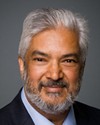As I think I said in my remarks, we invest hundreds of millions. You can read it in the public record. It's in our annual reports. In our four refineries, every year we invest roughly $600 million.
That's really just to keep the plants well maintained, reliable, and safe. It's also to ensure that we meet regulatory requirements, that we continue to move forward on some of our environmental commitments with regard to energy efficiency on the sites, and to maintain standards at those sites.
But the biggest investment we've made—we've made two of them in recent years, one at Edmonton and one at Sarnia, in the range of billions of dollars—is to adapt those plants to the changes in crude quality that exist here in Canada coming out of the oil sands. Those are massive investments in metallurgy, in hydrocracking and upgrading of those heavier, denser crudes into the same amounts of gasoline and diesel that we would have made out of lighter, sweeter crudes.
I'm not going to go into the oil sands side of the business. I think most of you may be aware of some of the advances we've made there in tailings technology, etc.
If I have another moment, I'll just mention the very other end of our business, our lubricants business, where we sell 350 specialized products. We do a lot of product development work in that area, with patents out on a variety of different products. We're selling our lubricants, the highest-quality lubricants in the world, in 70 countries now. There has been a lot of research and development work inside that arm of our business, to continue to allow it to be competitive and in fact grow, which it has done quite nicely in recent years.




